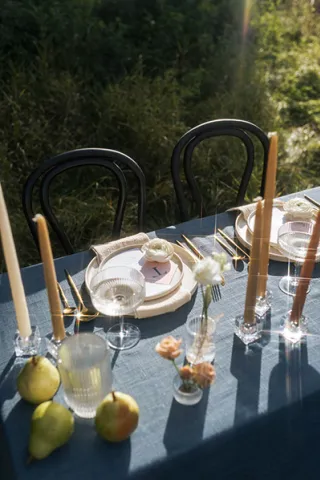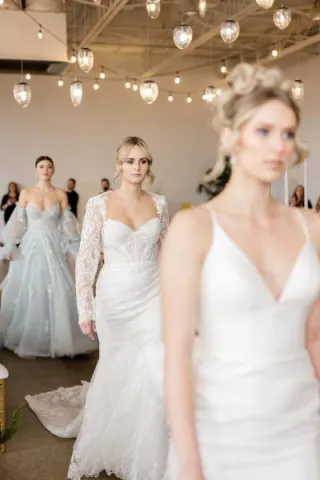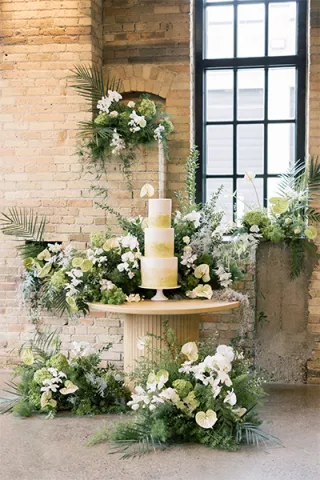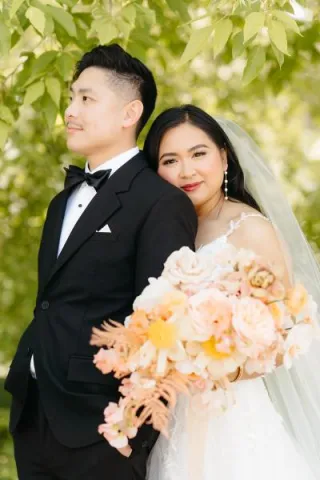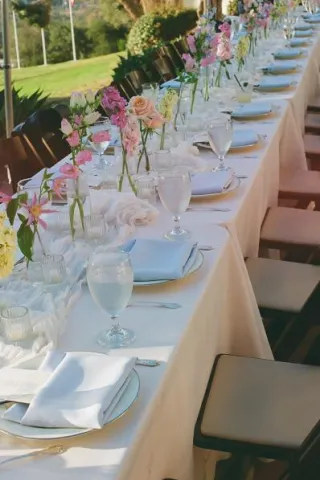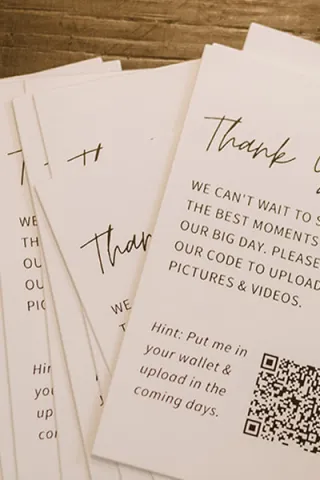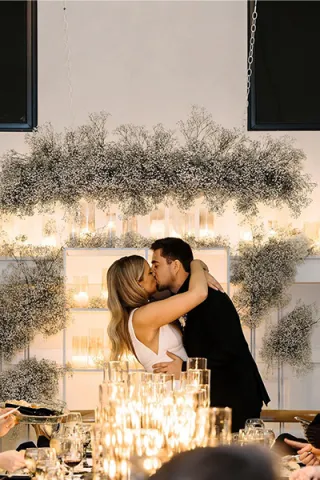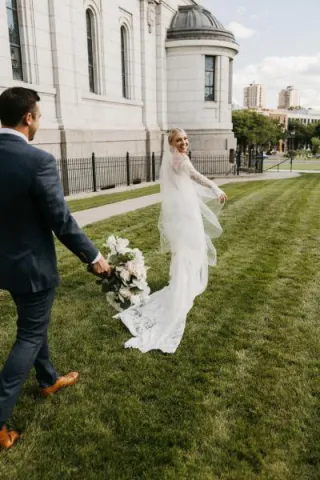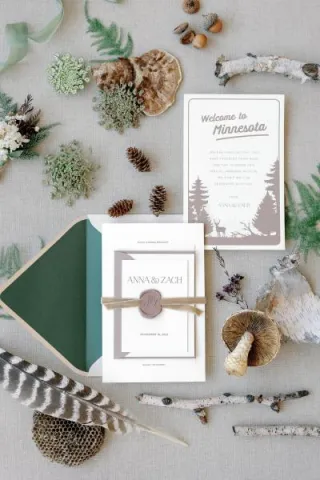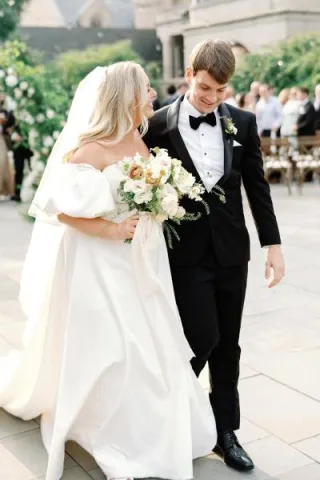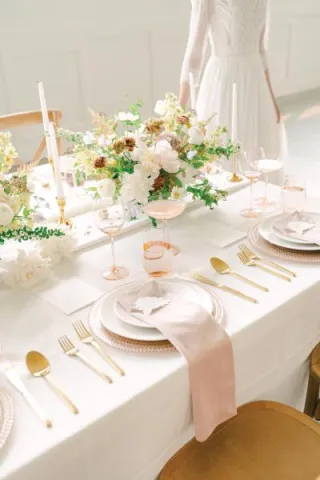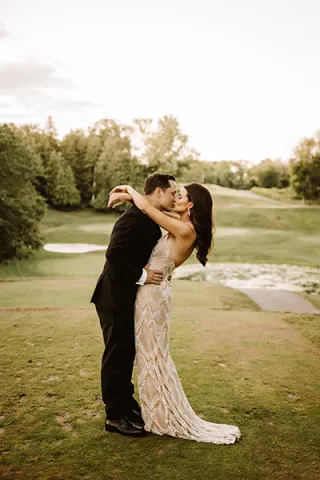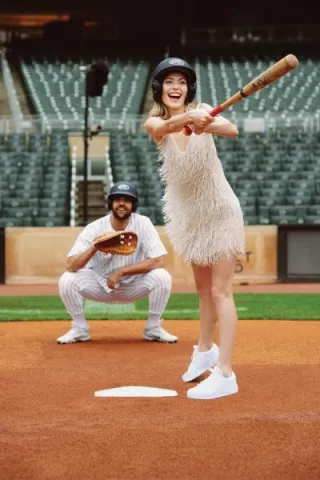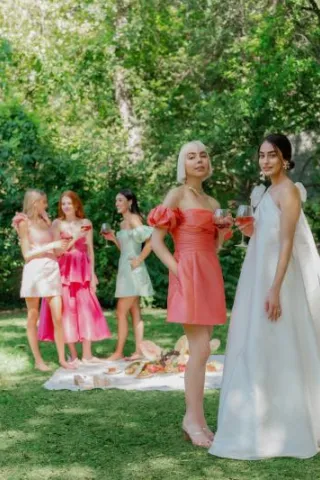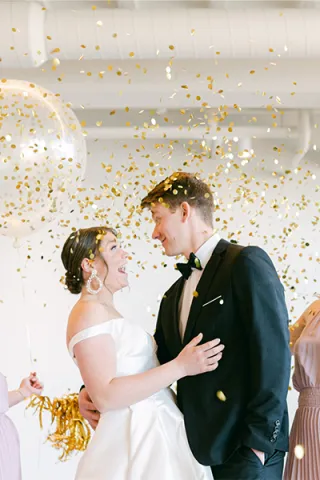The Twin Cities area is a hotbed of the local food movement, so it’s no surprise that many Minnesota florists are seeing an uptick in demand for wedding flowers grown in our region.
The reasons for choosing local blooms range from environmental to sentimental, and everything in between. Conventionally sourced flowers travel long distances to find their way to a wedding in Minnesota. The average grocery-store bouquet, for example, covers an average of 2,000 miles in its journey to the Midwest, encountering up to 127 chemicals along the way, not to mention the multiple layers of plastic and other packaging required to deliver it in pristine condition.
Flowers grown locally and organically, on the other hand, use fewer resources, generate less trash and support a healthy ecosystem where they’re grown, keeping chemicals out of the air and water, which benefits wildlife and the environment in the growing region. It also benefits the workers and florists who handle the plants along their journey from the ground to the bouquet, not to mention the brides who carry them down the aisle.
Slow Flowers
Christine Hoffman, owner of Foxglove Market & Studio in St. Paul, is a local leader of the “slow flower” movement, and works with both passion and diligence to educate the public on this trend, which has been steadily gaining momentum in recent years. “The importance of that perfect shade of coral, or having peonies for a September wedding, is being replaced with the importance of where the flowers came from and how they were grown,” says Hoffman.
Though the movement may be more prevalent on the West Coast, where diverse blooms are available year-round, more and more Minnesota designers and florists are shifting their focus to locally sourced flowers. Even with the limited growing season, dazzling designs are possible, no matter the wedding date.
“There is so much interesting flora all year if clients are willing to be flexible,” says Hoffman, citing a client whose March bridal bouquet included grapevine, willows and dried flowers. Even winter weddings can feature elements such as greens, berries, birch and willow for unique and elegant seasonal designs.
Through her shop, website, social media, and special workshops and events, Hoffman works to spread the gospel of sustainable, locally sourced flowers. “Education and exposure are key,” she says. “Once clients learn the facts about traditional flower sourcing and see the variety of local flowers available, they’re willing to make the leap.”

(above) Studio Fleurette owner Dani Erickson tends over 3,500 square feet of flower beds so she can add locally grown plants like lilacs, hydrangeas and mixed greens to her stylish arrangements. Photo courtesy of Studio Fleurette.
An Emotional Connection
Ashley Fox of Ashley Fox Designs in Chaska has seen a similar increase in interest in the trend. “Many brides are now coming to me with the request to have locally grown flowers. They like the idea of keeping things close to home, and having a feeling of connectedness to their venue.”
While eco-friendly concerns certainly factor into her clients’ decisions to use local flowers, says Fox, the emotional motivation is often even stronger. “Maybe they want some wavy grasses in their ceremony designs that remind them of the shoreline they used to visit on family vacations. Or maybe large dahlias like the ones their grandmothers used to grow in their gardens.” She fondly recalls brides who married at campsites or lakeside family cabins requesting local blooms and greenery to match the spirit and aesthetic of the locale.
Beyond the emotional reasons, there’s simply quality to consider. “The outcome of the product is always better with local flowers. Always,” says Fox, explaining that local flowers last longer, are more fragrant, and are fresher and of higher quality than those from far away. “To me, as a designer, the price we pay for these flowers is worth every penny. The quality of the flowers from these growers is unmatched by anything you find at a large wholesaler.”
Backyard Blooms
Just across the border in Somerset, Wisconsin, Studio Fleurette owner/lead designer Dani Erickson puts her horticulture degree to work in her designs, bringing local sources even closer to home—literally to her own backyard, where she tends over 3,500 square feet of garden beds. “I love to grow as many plants, flowers and shrubs as I can,” she says. “This lets me oversee the quality and fill my designs with care and attention to detail from start to finish.”
Living close to the source allows floral designers—and their clients—the opportunity to inspect their materials up close, in some cases before they’re even clipped off the plant. It’s a kind of intimate access that’s impossible with plants grown out of the country, or even several states away.
“Clients are learning to appreciate the natural beauty around them in all seasons,” says Erickson. “We can’t easily grow perfectly beautiful garden roses here, but we do have amazing foliage, berries and seasonal flowers that can be the perfect complement and really elevate the design.” She mentions one couple who worked with succulents—an expensive option at the outset, but the plants can be easily repotted after the event, keeping the spirit of the day alive in a pot or garden.

(above) Foxglove Market & Studio created a fairy tale-worthy bouquet of local blooms for Lindsey Freeman’s wedding. Photo by Guytano Magno Photography
Success in Simplicity
The signature blossom of Munster Rose floral studio in St. Paul is the dinner-plate dahlia. Each season, owner Jackie Reisenauer oversees the cutting of about 1,000 of them to keep up with client demand. To see these stunning flowers in their multi-hued perfection, it’s hard to believe they were grown in a climate with such a short growing system as we have in the Midwest. But they are, and without any chemical fertilizers or other treatments. “No pesticides, just water,” says Reisenauer.
For Munster Rose, sustainability isn’t a marketing strategy, but an ethos that informs every aspect Reisenauer’s business. These efforts include everything from composting floral waste, using excess floral water on growing plants and reusing vases. “Doing all this is not easier or more convenient,” she says. “We do it because we care.”
Opting for Local
When planning her 2015 wedding at the Chalet in Minneapolis’ Theodore Wirth Park, bride-to-be Lindsey Freeman identified sustainability as one of her guiding principles. “In my everyday life, I do my best to purchase items grown without the use of heavy chemicals,” says Freeman. “After doing research on flowers, I realized there’s no need to use those unhealthy tactics to create something that the earth has done a fantastic job of on its own.”
Freeman had originally planned to make arrangements and bouquets on her own, using flowers from local farmers’ markets. Spread thin from working, going to school and raising a baby, however, she eventually decided to enlist the help of a professional. She was unimpressed, though, by what she found through national wedding-planning websites, citing high prices and a lack of information about the flowers’ origins. A search for Twin Cities-area flower suppliers revealed an abundance of lovely options, and an awareness of where, and how, the plants were grown.
Eventually choosing Foxglove for her floral design, Freeman loved the intimacy and personalized service she found while working with a small independent florist. She appreciated the attention to issues of sustainability and local sourcing, as well as the level of technical and aesthetic skill backing up these principles.
Before long, the big day had arrived, and the Chalet was adorned with local blooms, transforming the space into what—says Freeman with a smile—felt like “a modern Minnesotan fairy tale.” *
Fresh Finds
A few of our favorite resources for local wedding blooms:
Ashley Fox Designs | Foxglove Market & Studio | Munster Rose | Studio Fleurette | Association of Specialty Cut Flower Growers | Minneapolis Farmers’ Market
